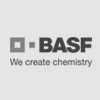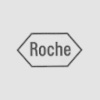Question:
What are some guidelines you might suggest for working with peptides?
Resolution:
In practice, solubilizing a peptide can be quite a challenge. Improper solubilization can potentially result in loss of the peptide and/or failure of the experiment. Peptide solubility is sequence dependent and it is for this reason that, if experimentally tolerated, the peptide sequence should contain at least 20% charged residues to facilitate solubilization.
There are at least three fundamental requirements in selecting a solvent to dissolve the peptide prior to use. The first is to select the solvent that effectively dissolves the peptide. Secondly, the solvent has to be compatible with the experimental application. Finally, the solvent should not react with or promote degradation of the peptide. Whenever the amount of sample allows, it is always a good idea to test the solubility of a small portion of the sample before dissolving the entire sample. It is also advisable to choose an initial solvent that can be easily removed by lyophilization in the event that you need to recover the peptide free of solvent.
The following guidelines may be helpful in solubilizing your peptide.
Peptides that are shorter than 5 residues are generally soluble in aqueous media, except in extreme cases where all the residues are very hydrophobic (W, I, L, F, M, V or Y).
Hydrophilic peptides containing >25% charged residues (E, D,K, R and H) and K+R+H residues) and basic peptides (R+K+H residues> E+D residues) are more soluble at neutral pH than at acidic pH.
Hydrophobic peptides containing 50% to 75% hydrophobic residues may be insoluble or only partially soluble in aqueous solutions, even if the sequence contains 25% charged residues. It is best to first dissolve these peptides in a minimal amount of stronger solvents such as DMF, acetonitrile, isopropyl alcohol, ethanol, acetic acid, 4-8M GdnHCl or urea, DMSO (if the sequence does not contain C, W or M), and other similar organic solvents, and then slowly add (drop wise) the solution to a stirred aqueous buffer solution. If the resulting peptide solution begins to show turbidity, you might have reached the solubility limit and it will be futile to proceed. Again, it is important to remember that the initial solvent of choice should be compatible with the experiment.
Very hydrophobic peptides containing >75% hydrophobic residues will generally not dissolve in aqueous solutions. These peptides generally require initial solubilization in very strong solvents such as TFA and formic acid and may precipitate when added into an aqueous buffered solution. The final peptide solution may require a higher concentration of organic solvent or denaturant, which may not be applicable in biological studies involving live cells.
Peptide sequences containing a very high (>75%) proportion of S, T, E, D, K, R, H, N, Q or Y are capable of forming extensive intermolecular hydrogen bonding network and have a tendency to form gels in concentrated aqueous solutions. These peptides may have to be treated similarly to step #3.
To minimize potential solubility problems, it is necessary to utilize all design and sequence considerations available that will improve peptide solubility.
















